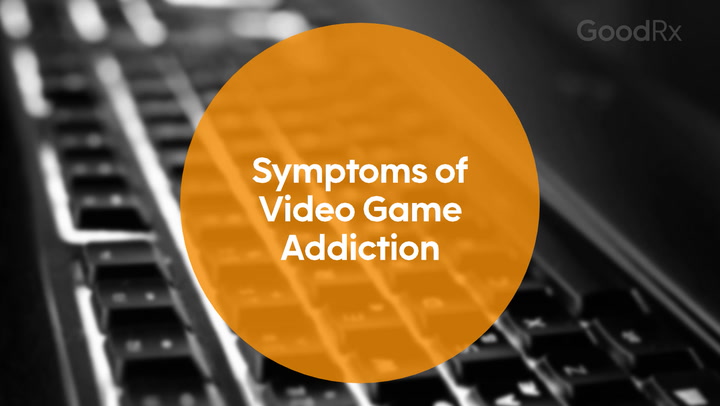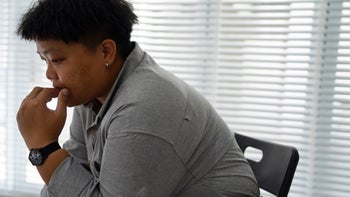
How Can You Help Someone With a Porn Addiction? A Resources and Tips Guide
Key takeaways:
Pornography addiction isn’t an official mental health diagnosis, but it can affect your thoughts, feelings, and behaviors.
Sometimes it can be hard to tell the difference between casual porn use and addictive behavior. Some signs of porn addiction are spending long periods of time viewing porn and having difficulty controlling porn use.
There are many treatment options available to support recovery, including 12-step programs and couples therapy.

The American Psychiatric Association (APA) doesn’t officially recognize pornography addiction as a mental health condition. But many researchers believe that it’s possible to have a behavioral addiction to porn. A behavioral addiction is when you can’t stop doing a certain activity — like gambling, playing video games, or viewing porn — even if it’s causing problems in your life.
Loving someone with a porn addiction can be scary and confusing. We’re here to guide you through some basic steps you can take to help someone with an addiction — while also taking care of yourself.
Helping someone with a porn addiction
Helping someone with a porn addiction can be difficult. Sometimes people don’t realize when a behavior has become a problem. And, like other addictions, someone with a porn addiction might be dealing with feelings of guilt and shame. Recognizing or admitting there’s something wrong can be a big first hurdle.
Before you set out to help a loved one, remember that mental health professionals have training to best address behavioral addiction. While you can’t treat their addiction alone, you may be able to support and assist them through the recovery process.
Look out for signs of porn addiction
There’s no specific way to diagnose porn addiction, but there are some signs that point to problematic behavior. Like with other addictions, porn addiction creates problems in someone’s life.
Here are some signs of a possible porn addiction:
Feeling like you can’t lessen your porn use, even when you try
Experiencing strong urges or cravings to consume porn
Cutting back on activities or hobbies you enjoy
Continuing to use porn, even when it causes problems in different areas of life
Experiencing withdrawal-like symptoms (irritability or restlessness) when you can’t view porn
Read more like this
Explore these related articles, suggested for readers like you.
You may be able to notice some of these signs and track how your loved one is doing. But it isn’t always clear from the outside why someone acts in certain ways.
How to talk to someone about porn addiction
If you think a loved one is dealing with a porn addiction, you may consider planning a conversation with them to talk about your concerns.
Here are some things to keep in mind when preparing to talk to someone about getting help:
Set a good time and place to talk. Agree on a time and place, so you’re both in a relaxed place to talk.
Prioritize the conversation. Find a calm and quiet place to talk and remove things that may distract you, like phones.
Share your concerns with empathy and compassion. Consider starting with why you’re concerned. It may help to write down key points of what you’d like to say. Do your best to stay calm.
Be prepared to listen. While it’s important for you to express your thoughts and feelings, make sure to give the other person time and space to share.
Set expectations. Letting your loved one know how you feel is great. But they need to know what you want, too. And keep in mind that you may not get to cover everything in one talk. You may need to find another time to talk or take additional steps like getting professional help.
What resources are available to help treat porn addiction?
Keep in mind that addiction is complex, and there are professionals out there who can help. So don’t feel like you have to go at it alone. There are a range of support groups and resources that can help with recovery.
Many people find it’s helpful to join a 12-step group. Here are some options:
There are many self-help options available, too. These include:
Smartphone apps
Self-help books
Faith-based support groups
Peer support groups
Self-guided online programs
For many people, therapy or medications can also help (more on this below).
Is porn addiction a real problem?
Yes, pornography can be a real issue when it causes problems in someone’s life.
Some people may view porn from time to time without any disruptions to their lives. But, for others, it can affect their relationships, work, and sense of self. A porn addiction can occur when a person continues to watch porn despite its negative impact.
In the past, the APA only defined substances like alcohol and drugs as addictive. But in 2013, the APA recognized certain behaviors as addictive. Gambling disorder, for example, became an official mental health condition. So it’s quite possible that other behaviors, like pornograpy consumption, may be officially recognized as addictive in the future.
Why is porn addictive?
Porn might be addictive because using porn — and possibly having an orgasm — feels good. Viewing porn may also trigger changes in brain chemicals.
For example, dopamine is a chemical in the brain that’s related to pleasure and motivation. When someone views porn, their brain releases dopamine — which can make that person want to do it again and again. Similar effects can occur when someone misuses alcohol and other drugs.
How is porn addiction treated?
There are a few different treatment options for pornography addiction. The best approach depends on different factors, like history of use and related problems that the addiction has created.
There are no FDA-approved medications that directly treat porn addiction. But some medications may help to address associated symptoms from depression, anxiety, or sleep problems.
Cognitive behavioral therapy (CBT) is helpful for many types of addictions, including behavioral addictions like porn. CBT can help people:
Lessen unwanted behaviors and avoid relapses
Manage withdrawal symptoms
Build and maintain relationships
Reduce guilt and shame
Use new coping skills
Couples therapy or family therapy may also be helpful. Couples therapy can help both partners explore and work on the issue and develop clear and empathetic ways of communicating. And working with a sex therapist may be a good option if porn addiction is connected to other issues in someone’s sex life, like erectile dysfunction or low libido.
The bottom line
Trying to help someone with an addiction can be very challenging — and pornography addiction is no exception. Important first steps include knowing the signs of addiction and accepting that there’s a problem. Keep in mind that there are many resources and support groups for people experiencing addiction and their families. From cognitive behavioral therapy and couples counseling to 12-step programs, there are treatment options that can help address porn addiction.
Why trust our experts?


References
Alvi, S. S., et al. (2012). Behavioral addiction versus substance addiction: Correspondence of psychiatric and psychological views. International Journal of Preventive Medicine.
American Psychiatric Association. (2023). What is gambling disorder?
Love, T., et al. (2015). Neuroscience of internet pornography addiction: A review and update. Behavioral Sciences.
Porn Help. (n.d.). You have options for quitting porn.
Substance Abuse and Mental Health Services Administration. (n.d.). Supporting a loved one dealing with mental and/or substance use disorders.
If you or someone you know struggles with addiction, help is available. Call SAMHSA’s National Helpline at 1-800-662-4357 to learn about resources in your area.





















